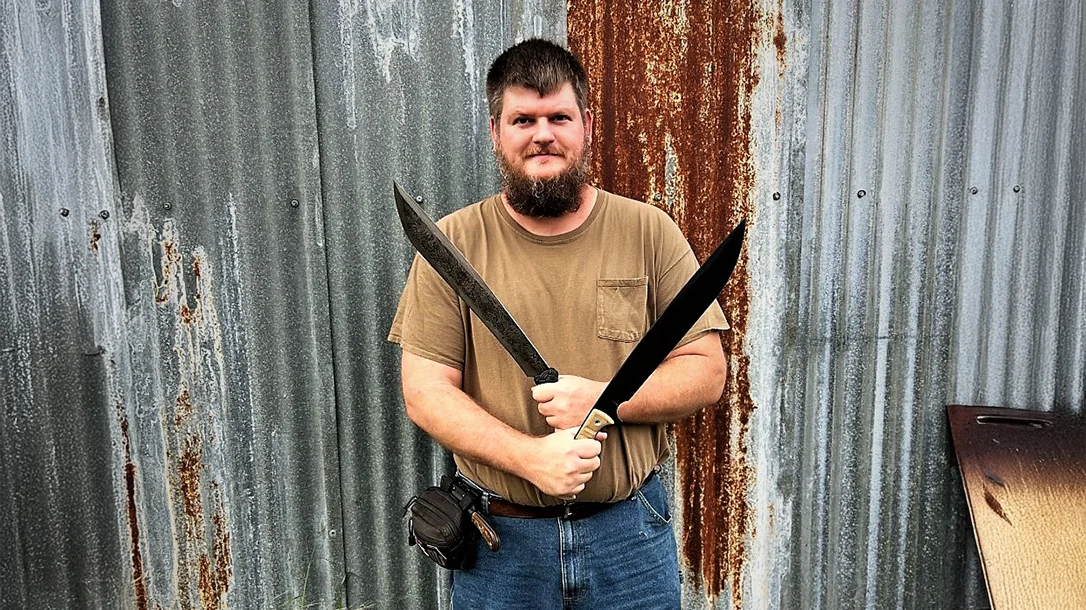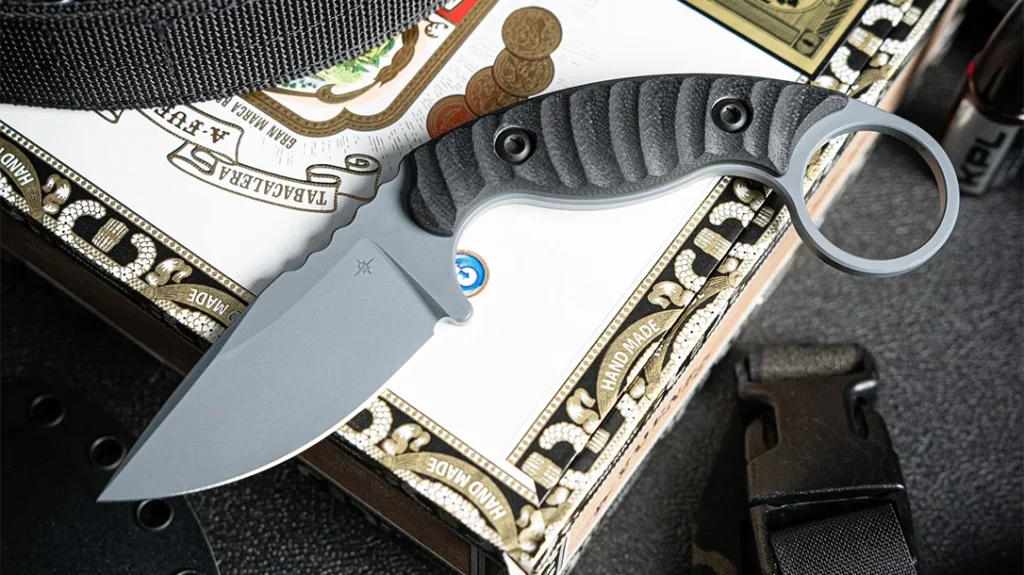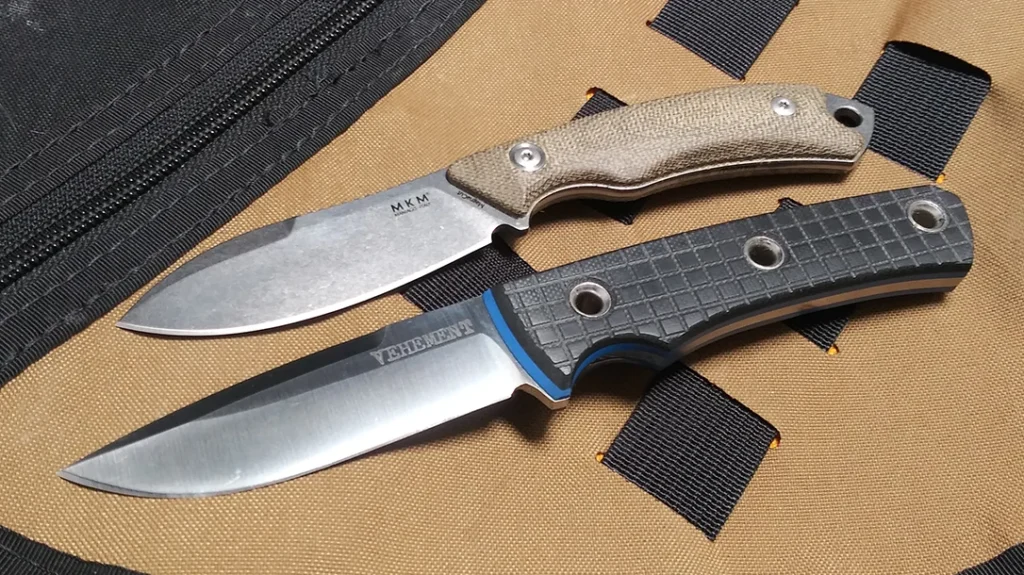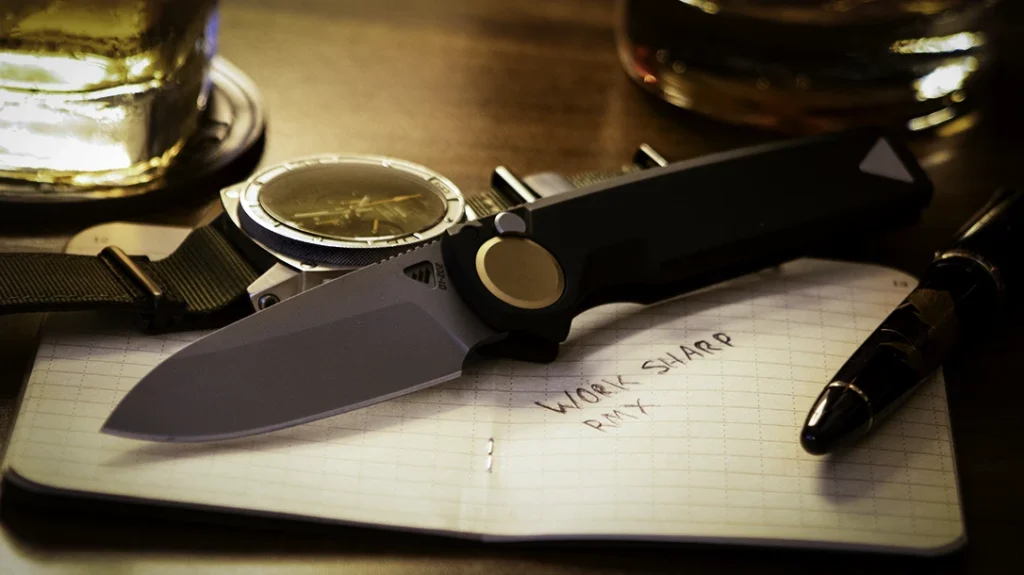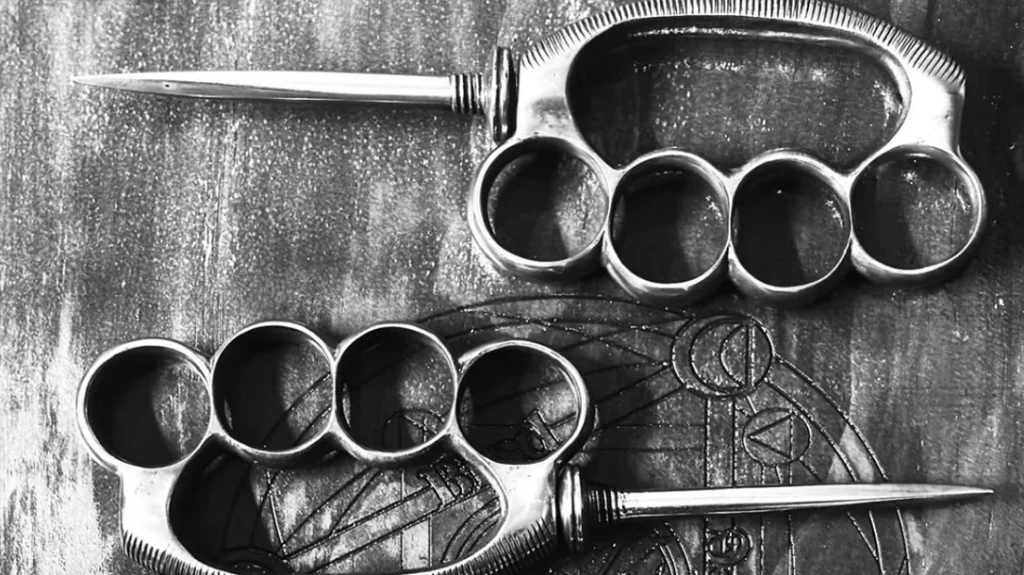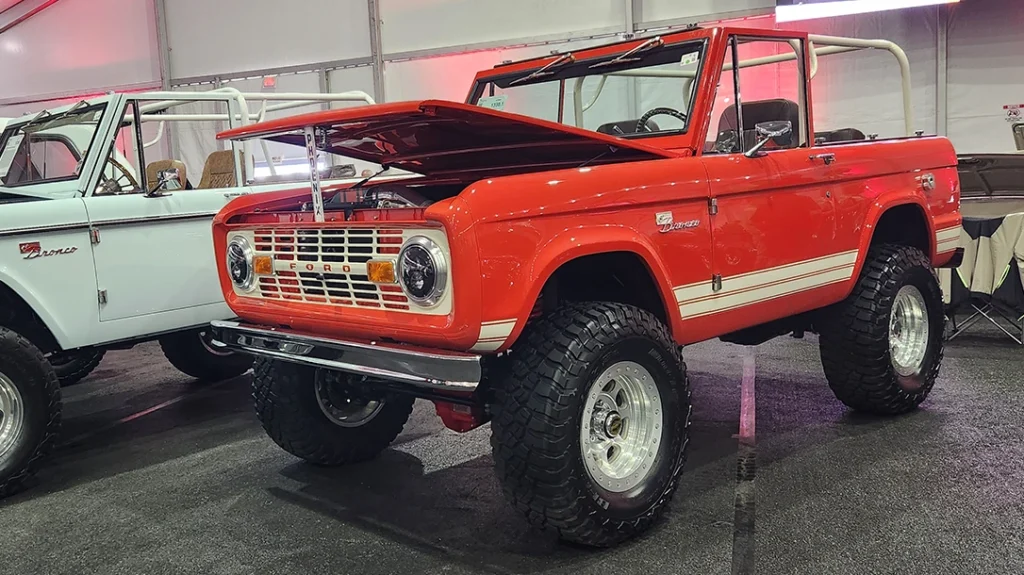History Channel’s Forged in Fire Champion, James Helm, of Helm Enterprises, pounds out steel like the old-school American blacksmiths. Not only does he forge tools, but he also wears another totally different hat, producing stock removal parangs, knives, tomahawks, and swords. They are every bit as hard-working as the man himself.
Who is James Helm?
Researching in public libraries and internet discussion forums, James became interested in blacksmithing around age 15. He got a rivet forge and a small amount of coal and started pounding iron at the age of 16.
Whenever James’ father contemplated an undertaking, whether custom hay baling or trucking, it was done under the name Helm Enterprises. So, in the spirit of his father and his immeasurable impact on his life, James named his business Helm Enterprises—Grinding Division.
Advertisement — Continue Reading Below

Q&A
I’ve known James Helm for about 10 years and have seen firsthand how his work has changed and evolved over the years. I caught up with James to ask him a few big questions to get a handle on his work and take a peek behind the curtain.
What steels and materials do you favor?
I don’t like to play around with materials a lot. I like to know that a particular material will behave a certain way. This allows me to focus my attention on design, ergonomics, and balance. I use 80CrV2 steel almost exclusively these days.
Advertisement — Continue Reading Below
My forged blades usually get a handle wrapped with paracord or hemp cord over a neoprene foundation. The cord is impregnated with marine epoxy to build a solid, waterproof composite material in place on the tang. For slab handles, I use synthetic materials that are minimally affected by environmental changes. I particularly like TeroTuf, which is lightweight and grippy.
For sheaths, I use Boltaron, which is like Kydex, but less affected by temperature extremes. I like how the eyelets in a Boltaron or Kydex sheath make it into a chassis. This allows various carrying hardware, auxiliary blades, extra cordage, and gear pouches to be configured to the end user’s needs.

Advertisement — Continue Reading Below
What makes Helm Forge stand out?
My forged blades are shaped by a hammer as closely as I can reasonably manage to their final dimensions. This leaves a distinctive forge finish on the blades.
My mid-techs are as simple as I can make them. I feel like I have a good eye for the flow of lines in a design, which is the primary source of aesthetics in a blade. The designs are uncluttered and straightforward working tools with some aggression to them.
The Steel
I am no stranger to the workmanship of James Helm. I have been fortunate enough to take his work to the Amazon Jungle during a jungle survival class. Likewise, I have used his blades in the hardwood forests of the United States as well.
Advertisement — Continue Reading Below
He forged me a long chopper suitable for the jungle, along with a medium-sized fixed blade. It was well used for building a swamp bed, cutting firewood, clearing a signaling rescue zone, making a raft, and building a jungle grill.
Now, I have the chance to use his tools from the Grinding Division of Helm Enterprises—his stock removal mid-techs.
If it isn’t apparent, James specializes in chopping knives. Naturally, I wanted one of each.
Advertisement — Continue Reading Below

James makes a one-piece tomahawk that is more like a hatchet in weight and comes in two lengths: 12 ½ inches and 15 inches. I chose the 12 ½-incher with ¼-inch thick stock in his preferred 80CrV2 steel. The Woodsman Hawk features a 3-inch bit (cutting edge). It has a Cerakote finish and TeroTuf Coyote Tan scales. It weighs 28 ounces.
The Helm Parang was my other choice, which features a 10-inch-long 80CrV2 steel blade and a 3/16-inch-thick blade. The overall length is 15 ¼-inches, with a 5 ½-inch handle. Being a long-time fan of the Malaysian Parang, this was an obvious choice. It is also fitted with a set of TeroTuf Coyote Tan scales, Cerokote finish, and Boltaron sheath.
Advertisement — Continue Reading Below
Woodsman Hawk
I have been using this hawk for over a year and counting. It is handy enough to use with one hand and capable of operating with two. This is a short-handled tool, meaning it’s also dangerous to use without proper knowledge.
When chopping or splitting, I always get down low and back up my work with a solid piece of wood or the ground if that’s the best I can find. Always consider where that sharp bit will end up after a successful split or chop.
The first thing I always do with every cutting tool I receive is to check for sharpness via shaving arm hair. Every chopping tool should be able to shave hair from the factory; at least, that’s a good starting point. The Woodsman Hawk passed this test before ever taking it to the great outdoors.
The second test I usually do is to test how the edge geometry can shave dry wood for fire preparation. Most people acquainted with making feather sticks for a fire with a tomahawk, hatchet, or axe tool grip it like they would a knife, which is cumbersome.
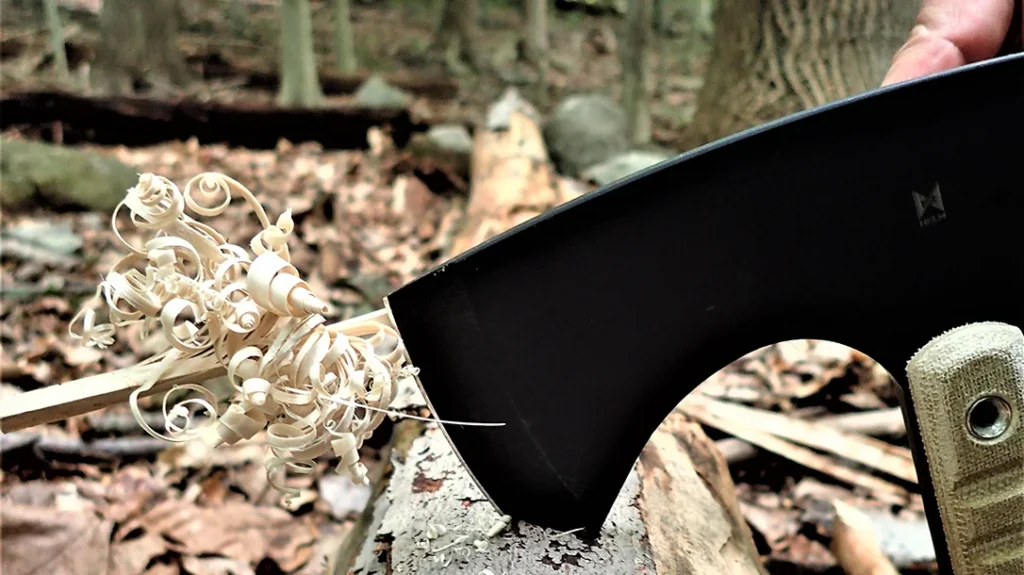
Too much weight and lack of control. I prefer to find a stout log or stump and bury the heel of the hawk (bottom area of the bit) into the wood. Then, I steady it with one hand while the other hand draws back against the sharpened bit to produce the most amazing curls of wood.
There is a learning curve, but not much. When sharpening tools or making feather sticks, moving the smaller/lighter of the two should always be considered.
A True Camp Champ
Small hawks and hatchets don’t split lots of big wood—they just don’t. So, we make tools to aid this task in the form of wedges. That is correct; hardwood wedges must be carved to help split large pieces of wood. This is where the Woodsman Hawk shines, making tools to make camp life better.

A good saw is an all-around camp companion ready to lend a helping hand or take the reins. Coupled with a stout chopper, they can undeniably be a force to be reckoned with.
Use the saw to cut wrist to bicep-thick pieces to feed a small wood stove. Then, use the chopper to split the wood to make them more manageable. One-handed chops completed this task while chopping on a solid wood surface.
Small wooden rounds could also be split easily with the help of a wooden baton. This method is safe and accurate since the blade is placed precisely where the split needs to be.

The little hawk felt more like a light hatchet and could perform all the same chores, too. The TeroTuf scales were comfortable and added grip while never being too aggressive on the hand.
James was correct about 80CrV2 steel, as I haven’t had any chips or rolls since I’ve used and abused it!
Helm Parang
I have been a long-time fan of Parangs. After seeing their effectiveness in Southeast Asia, I seem to gravitate towards their shape. My first trip to Malaysia was in 2012, where I acquired several Parangs. I then went on a jungle trip in the Philippines with them. It didn’t take long before I sort of “got it.”
Since then, I have compared every Parang to those made in Malaysia. Parangs are long-bladed chopping tools with a sheepsfoot tip and are meant to be thick, not thin, like machetes. Generally, their blade can be between 10 and 16 inches, depending on the region and use. James made his right at the compact 10-inch size.

The steel, scales, and blade finish were the same as the Woodsman Hawk. However, the Parang was 3/16-inch thick. The overall length is 15 ¼ inches, with a 10-inch blade and a 5 ¼-inch handle.
The Kydex sheath was on par with the sheath from the Woodsman Hawk. I used the sheath as a carry-in pack sheath, and once I arrived in the woods, I kept it nearby and handy until I was ready to go.
The Helm Parang Hits the Woods
After the initial arm hair shaving test, I took the Parang to the woods and made a free-hand feather stick. By simply holding a stick with my free hand, I used the Parang to shave the wood—slightly turning the stick after each slice. As I expected, this was a breeze for the Helm Parang.
The plan for the day was to make a swamp grill to grill some ham. I would use the Parang to prepare firewood, slice food, and build the swamp grill. I located four forked branches that were thumb thickness, two crossbars, and about four finger-thick green sticks as the grill.
The Parang could cut through broomstick-thick pieces with a single swing and sometimes a second, for good measure. I was using a small homemade hobo wood stove, so I didn’t need large fuel. However, smaller hardwood fuel needs more processing than larger logs.

Like the Woodsman Hawk, the Parang was tasked with splitting small rounds for fuel. It split quite well on a solid wooden surface by tapping the blade into one end and then lifting the blade, with the wood, and then driving it down on the wooden surface until it was split.
Keeping with the cooking theme, I made a simple pot hook with the Parang. Once a stout forked branch was trimmed, I made two very controlled chops to form an X. Then, I carved up towards the end. This created the bird’s beak type of hook to hang a kettle by the bale.
Constructing Cover with the Helm Parang
The grand finale for the Helm Parang was to build a scaled-down lean-to for keeping firewood dry. I used three freshly blown-down trees for most of the materials. Two Y-branches, a long ridgepole, and several bows were used to make a simple, effective lean-to with the Parang.
Forging and grinding—Helm Enterprises does it all!
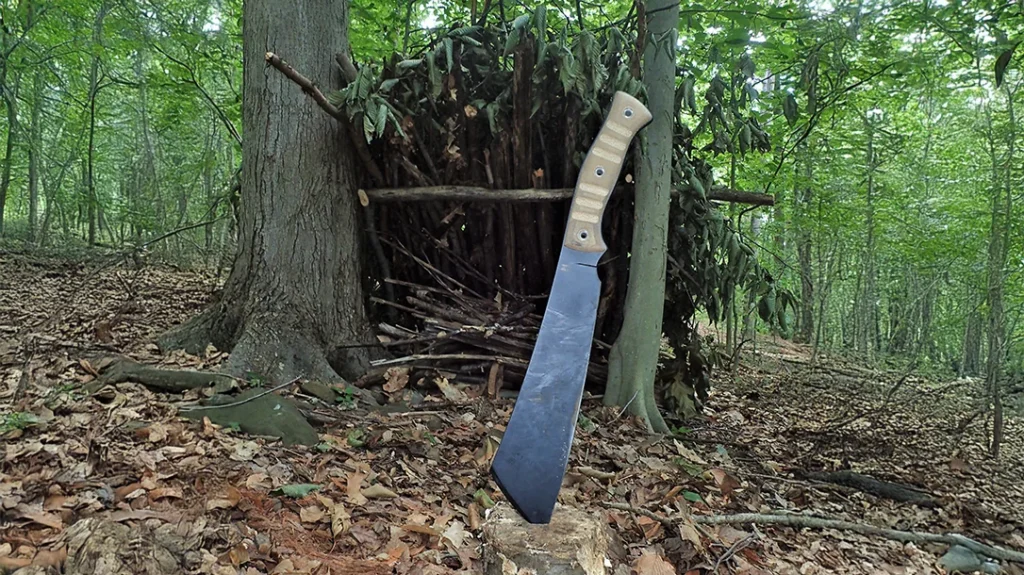
Bonus Blade – The Helm Bush Sword
The missing piece to the Mid-Tec series is the large Bush Sword. With an overall length of 22 inches, it’s a monster. The Bush Sword has a blade length of 15 1/8 inches, approximately 14 inches of which are devoted to the cutting edge.

Sticking with oversized proportions, the handle has 7 inches of usable real estate. Like the Woodsman Tomahawk, the Bush Sword is made from 80CrV2 steel. However, it is 3/16-inch thick and coated with black Cerakote.
The monster chopper also has ¼-inch thick TeroTuf scales in Coyote Tan, which offer lots of grip and texture.
Woodsman Tomahawk Specs
| Overall Length | 12 ½-inches |
| Blade Length | 3-inches |
| Thickness | ¼-inches |
| Steel | 80CrV2 steel |
| Finish | Cerakote |
| Handle Scales | TeroTuf Coyote Tan |
| Sheath | Boltaron |
| Weight | 20 ounces |
| Made in | USA |
| MSRP | $300.00 (add $15 for sling) |
Helm Parang Specs
| Overall Length | 15 ¼-inches |
| Blade Length | 10-inches |
| Thickness | 3/16-inches |
| Steel | 80CrV2 steel |
| Finish | Cerakote |
| Handle Scales | TeroTuf Coyote Tan |
| Sheath | Boltaron |
| Weight | 16 ounces |
| Made in | USA |
| MSRP | $350.00 |
